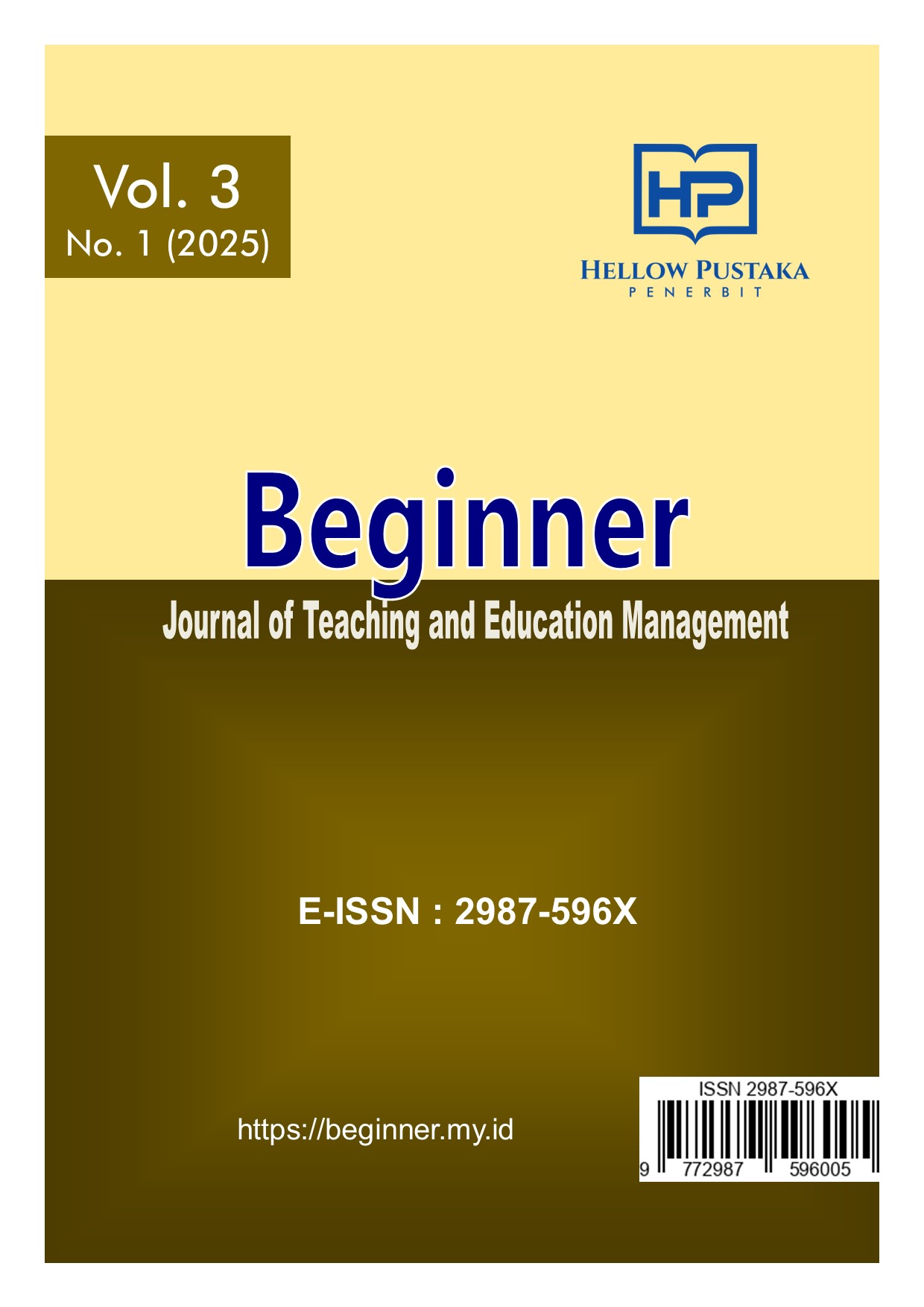School Policy Analysis on the Impact of Gadget Use on Primary School Children
DOI:
https://doi.org/10.61166/bgn.v3i1.13Keywords:
Impacts, Policies, Education, GadgetsAbstract
The purpose of this study was to describe the results of an analysis of school policies regarding the impact of using gadgets on elementary school children. The media used is descriptive qualitative method, which is data collection in accordance with library research. The results of this study are that the impact of using gadgets on elementary school children is quite significant, the use of gadgets that are too long and without parental supervision has an impact on dependence and influences the development of behavior and social interaction, children tend to be difficult to get along with, easily angry and immersed in the world that they create with their gadgets. Therefore the importance of school policies regarding the use of gadgets in elementary schools regarding the prohibition of bringing and using gadgets at school. And to overcome the demands of the times regarding technology, online learning, and so that children are not clueless, schools have made a strategy by providing multimedia and wifi rooms for students to use and find learning information with guidance from the teacher during study hours. In addition, the school also regularly schedules teacher and student meetings as a means of education and evaluation of how students are at school so that they can minimize the impact of using gadgets and educational goals can be achieved.
Downloads
References
Ariston, Yummi, and Frahasini Frahasini. “Dampak Penggunaan Gadget Bagi Perkembangan Sosial Anak Sekolah Dasar.” Journal of Educational Review and Research 1, no. 2 (2018): 86. https://doi.org/10.26737/jerr.v1i2.1675.
Aswar, Aswar, Sulfian Syarif, Sulkipli Sulkipli, and Muhammad Amirullah. “Analisis Arah Kebijakan Sekolah Terhadap Penggunaan Gawai Android Dalam Aktivitas Belajar Peserta Didik Di Masa Pandemi Covid-19.” Jurnal Kependidikan: Jurnal Hasil Penelitian Dan Kajian Kepustakaan Di Bidang Pendidikan, Pengajaran Dan Pembelajaran 7, no. 1 (2021): 247. https://doi.org/10.33394/jk.v7i1.3323.
Dasar, Siswa Sekolah, S D N Ciharuman, Kab Bandung, Jawa Barat, S D N Barosmandiri, Kota Cimahi, and Jawa Barat. “PEDAGOGIK Vol. VI, No. 1, Februari 2018.” Pedagogik 1, no. 1 (2018): 9–20.
Habe, Hazairin, and Ahiruddin Ahiruddin. “Sistem Pendidikan Nasional.” Ekombis Sains: Jurnal Ekonomi, Keuangan Dan Bisnis 2, no. 1 (2017): 39–45. https://doi.org/10.24967/ekombis.v2i1.48.
Kurniawan, Agung Rimba, Faizal Chan, M Sargandi, Stevie Yolanda, Resty Karomah, Wuri Setianingtyas, and Sintia Irani. “Kebijakan Sekolah Dalam Penggunaan Gadget Di Sekolah Dasar.” Jurnal Tunas Pendidikan 2, no. 1 (2019): 72–81. https://doi.org/10.52060/pgsd.v2i1.195.
Media, Penggunaan, Audio Visual, Untuk Meningkatkan, Kemampuan Menyimak, and Anak Usia. “Ahmad Husen, 2014 PENGGUNAAN MEDIA AUDIO VISUAL UNTUK MENINGKATKAN KEMAMPUAN MENYIMAK ANAK USIA DINI Universitas Pendidikan Indonesia | Repository.Upi.Edu | Perpustakaan.Upi.Edu” 1, no. 1 (2014): 1–6.
Pebriana, Putri Hana. “Analisis Penggunaan Gadget Terhadap Kemampuan Interaksi Sosial Pada Anak Usia Dini.” Jurnal Obsesi : Jurnal Pendidikan Anak Usia Dini 1, no. 1 (2017): 1. https://doi.org/10.31004/obsesi.v1i1.26.
Riyana, Cepi, and M Pd. “Peranan Teknologi Dalam Pembelajaran,” no. March (2008). http://www.cepiriyana.blogspot.comhttp//www.projectcepi.blogspot.com.
Silalahi, Saudur Yusmi. “PROSIDING PENDIDIKAN DASAR URL: Https://Journal.Mahesacenter.Org/Index.Php/Ppd/Index Gadget Dan Anak Sekolah Dasar.” Prosiding Seminar Nasional Pendidikan Dasar 1, no. 1 (2022): 335–46. https://doi.org/10.34007/ppd.v1i1.219.
Ulil Amri, Muhammad Iqbal Al, Reza Syehma Bahtiar, and Desi Eka Pratiwi. “Dampak Penggunaan Gadget Terhadap Kemampuan Interaksi Anak Sekolah Dasar Pada Situasi Pandemi Covid-19’.” Trapsila: Jurnal Pendidikan Dasar 2, no. 02 (2020): 14. https://doi.org/10.30742/tpd.v2i2.933.
Downloads
Published
How to Cite
Issue
Section
License
Copyright (c) 2025 Desi Rahmawati, Muhammad Al Mighwar

This work is licensed under a Creative Commons Attribution 4.0 International License.







